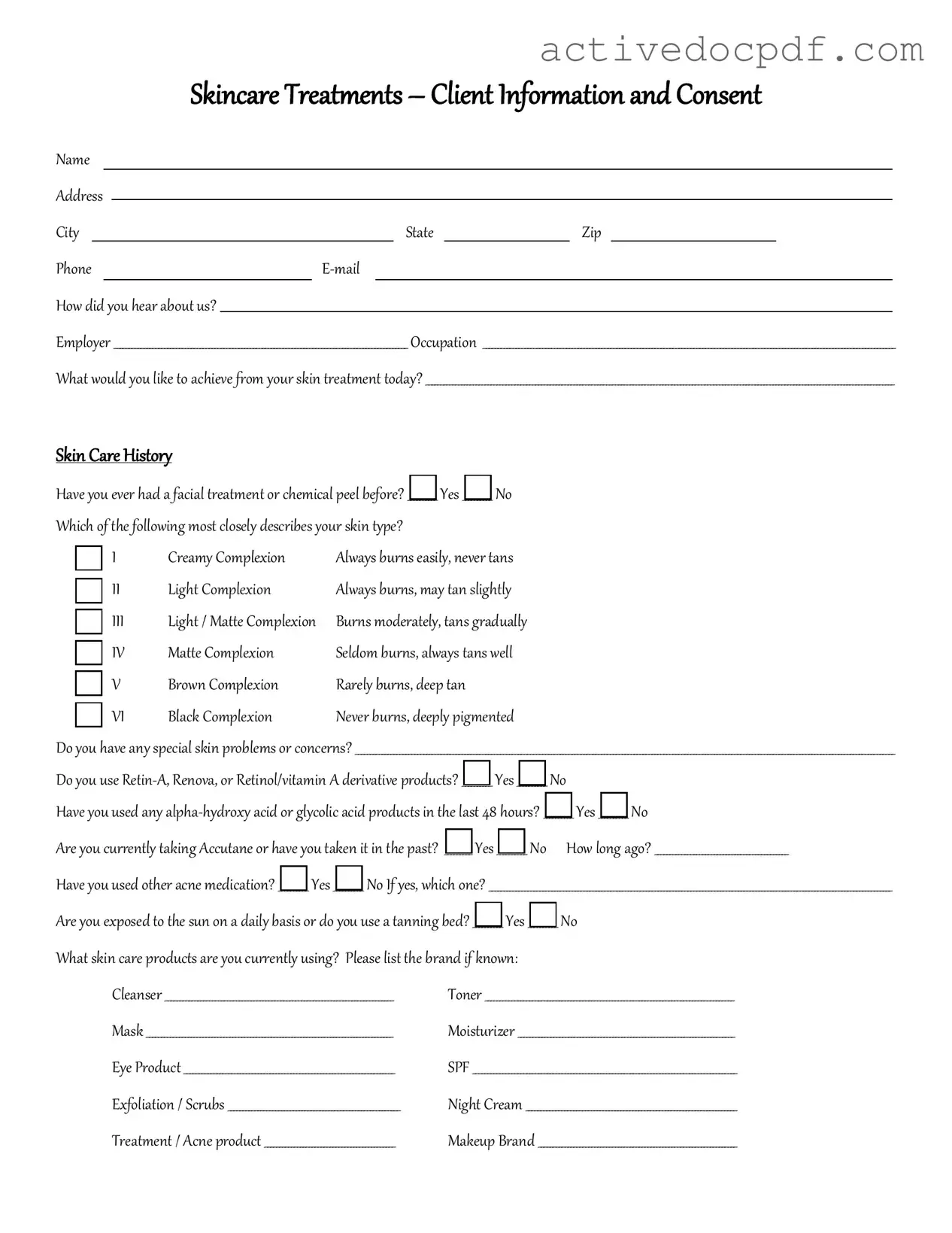A Facial Consent form is a document that individuals sign before receiving facial treatments or procedures. It outlines the nature of the treatment, potential risks, and the individual's consent to proceed. This form is essential for ensuring that clients are informed about what to expect and agree to the process.
The Facial Consent form serves several important purposes:
-
It protects the service provider by documenting that the client has been informed about the treatment.
-
It helps ensure that clients understand any risks or side effects associated with the procedure.
-
It establishes a clear understanding between the client and provider regarding the treatment being performed.
Common elements found in a Facial Consent form include:
-
A description of the facial treatment or procedure.
-
Potential risks and side effects.
-
Information about aftercare and recovery.
-
Confirmation of the client's medical history and any allergies.
-
A statement indicating that the client has had the opportunity to ask questions.
Any individual receiving a facial treatment should sign the Facial Consent form. If the client is a minor, a parent or legal guardian must provide consent on their behalf. This ensures that all parties are aware of and agree to the treatment being administered.
If a client refuses to sign the Facial Consent form, the service provider cannot proceed with the treatment. This refusal protects both the client and the provider. It is crucial for clients to understand the implications of their decision and to communicate any concerns they may have.
Yes, a client can withdraw consent at any time, even after signing the Facial Consent form. If a client feels uncomfortable or has second thoughts, they should communicate this to the service provider immediately. The provider will respect the client's decision and halt the procedure if necessary.
The validity of a Facial Consent form can vary based on the provider's policies and the nature of the treatment. Generally, it is valid for the specific session for which it was signed. If a client returns for future treatments, a new consent form may be required to address any changes in health status or treatment plans.
Clients should feel empowered to ask questions about the Facial Consent form before signing it. Service providers are obligated to provide clear explanations and address any concerns. It is essential for clients to fully understand the contents of the form and the treatment being proposed.
Yes, the information contained in the Facial Consent form is typically considered confidential. Service providers should handle this information with care and ensure that it is stored securely. Clients should inquire about the provider's privacy policies if they have concerns regarding confidentiality.
